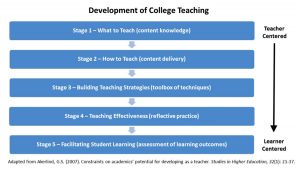by Alison Staudinger, Ph.D., University of Wisconsin – Green Bay
Higher education should prepare students for citizenship, yet this is a difficult task in this fractious political climate. Partisanship is at an all-time high in the United States and the electoral contest between Hillary Clinton and Donald Trump is unlikely to ease those tensions. The summer of 2016 has also been marked by polarized responses to videos of police brutality; #alllivesmatter and #blacklivesmatter share videos and display the structures of American society in starkly different terms. Students developing as citizens need habits of mind to help them evaluate the messy and propagandistic political world. Judging politically is a reflective, metacognitive process, not just aimed at political facts, but also values and ethical commitments, and in response to the pluralistic values of others. It is metacognitive because it requires a shift from one’s own reflections to the imagined reflections of others and a dialogue between these reflections. Here, I’ll discuss what is metacognitive about political judgment, give a (brief) nod to the work of Hannah Arendt, and offer some ideas for the classroom and remaining questions.
One difficulty in developing political judgment is our tendency to assign higher credibility to information that is easier for us to process, perhaps because we have heard it often, it fits into our ideology, or tells a familiar and coherent story (Schwartz, N. 2015). Thus information silos, as on social media where one may have many friends sharing the same stories or perspectives, can make metacognitive judgement difficult (Johnson et. all 2009). Political ideology can limit evaluation of information or policy positions, stopping the metacognitive process of thinking about our thinking about politics, and instead replacing it with the ease of confirmation bias.
Yet, if there is a way out of the political echo chamber, it seems likely to involve reflection and the ability to notice and evaluate that reflection. Indeed, Chick, Karnahan and Caris (2009) found that metacognitive reflection that was sensitive to emotion and affect helped students understand and respond to racism by providing distance to examine their own emotional responses. Mezirow (2003) frames this as “learning that transforms problematic frames of reference—sets of fixed assumptions and expectations (habits of mind, meaning perspectives, mindsets)—to make them more inclusive, discriminating, open, reflective, and emotionally able to change” (58). He links this transformative learning to Jurgen Habermas’ discourse ethics, arguing that the goal of adult education is to prepare citizens for the critical reflective work both of collective problem solving and deliberative discourse.
Habermas’ discourse ethics are not the only approach to understanding how citizens develop politically in a plural world; indeed, one alternative theorist of political discourse and action is Hannah Arendt (1906-1975). Arendt, political theorist, wrote popular books on totalitarianism, political action and American politics and controversially covered the Eichmann trials, during which she developed her famous idea of “the banality of evil.” Slightly less well known is her unique work on political judgment, as she died before completing it. However, she provides a unique framework for thinking through reflective judgment as a mental “two-in-one.”
Arendt (1989) adapts Kantian aesthetic judgment to the political and social world, exploring how to evaluate new phenomenon when one does not have an existing concept or category under which it can be explained. The solution is a redefined “common sense” which, for Arendt, is “the intuitive feeling for worldliness” that allows us to share the world with pluralistic others (Schwartz 2015). Arendt’s common sense is not community norms— agreeing with those who post on our Facebook wall—although it is formed in part by the “company we keep” both in books and in person, in discourse with whom we form our ideas of what common standards of judgment are.
This orienting common sense requires metacognitive consideration of both our individual perspectives and those of pluralistic others. These positions are often in dynamic tension with each other, producing cognitive dissonance. The faculty of imagination allows us to move, mentally, outside ourselves to consider the status of others, although she is well-aware we are still always ourselves. Imagining the perspectives of others as well as our own is “enlarged mentality;” it does not replace the partial view we have from our own subject position, nor is it a universal “view from nowhere.” Instead, it allows us to reason via internal dialogue which, in the unfinished The Life of the Mind, she calls this the “two-in-one” of thinking.
Developing Arendtian metacognitive reflective judgment is a difficult task, given the barriers to imagination. However, consider the question of how to respond to a video, like that taken of Philando Castile, where a person is killed by police. After our immediate reaction and interpretation, we can improve this judgment by considering the perspectives of others, not as an additive process, but as an exercise in enlarged mentality, playing the positions off each other. As Arendt notes, our judgments are not “universally valid” because they cannot “extend further than those others in whose place the judging person has put himself” (Beiner et. all 2001). But certainly an attempt to think from the position others prompts us to consider the sources of our judgments and gather information on the perspectives of those others—it demands that we think through police brutality from a non-binary perspective, as the two-in-one is really many and one.
Arendt’s notion of the “two-in-one” is useful for framing the importance of student practices of self-dialogue and reflection prior to or even instead of deliberative contestation in the classroom. We might practice skills and reflective activities, building up to full-scale deliberation (Stephens et all. 2013), or include reflective practice in unexpected places, like law school (Casey). We can also adapt what we know about changing deeply held beliefs to prompt better reflection on standpoints and our thinking. Framing new information in non-challenging language or affirming student self-worth can help with their consideration of identity challenging ideas (Hardisy, Johnson, & Weber, 2010). My students often write on a big question prior to class, and then engage various materials that relate to this big question, and then revisit and revise their paper as a dialogue with several of these perspectives. We also often do “think-alouds” in class with a partner or small group to discuss which voices are present in our internal dialogue and how they relate to our world in common.
There are still deep ethical and epistemological questions about Arendt’s reflective judgment; for example, can we reason from the imagined position of others if our knowledge of their perspective is lacking? Arendt herself was harshly, and I think rightly, criticized for her lack of such knowledge when she critiqued the actions of the NAACP and black families at Little Rock in 1957. Perhaps meta-cognition about the pluralistic political world requires diverse knowledge about the actual viewpoints of others—knowledge often lacking in the racially and politically segregated U.S. If we want prepare our students for citizenship, we need to challenge them to “go visiting” the viewpoints of others and provide the resource t make this possible. Although political divisions and ideologies make two-in-one thinking difficult, cultivating a metacognitive process for political judgment is worthy educational goal.
References
Arendt, Hannah, and Ronald Beiner. (1989). Lectures on Kant’s political philosophy. Chicago: University of Chicago Press.
Beiner, Ronald, Hannah Arendt, Stanley Cavell, Charles Larmore, Onora O’Neill, George Kateb, Robert J. Dostal et al. Judgment, imagination, and politics: Themes from Kant and Arendt. Rowman & Littlefield Publishers, 2001.
Casey, Timothy. 2014. Reflective Practice in Legal Education: The Stages of Reflection. Clinical Law Review 20:317.
Chick, Nancy L.; Karis, Terri; and Kernahan, Cyndi. (2009) “Learning from Their Own Learning: How Metacognitive and Meta-affective Reflections Enhance Learning in Race-Related Courses,” International Journal for the Scholarship of Teaching and
Learning: Vol. 3: No. 1, Article 16. Available at: http://digitalcommons.georgiasouthern.edu/ij-sotl/vol3/iss1/16
Hardisty, D. J., Johnson,E.J., & Weber, E.U. (2010). A Dirty Word or a Dirty World? Attribute Framing, Political Affiliation, and Query Theory. Psychological Science, 21, 86-92.
Johnson, T. J., Bichard, S. L., & Zhang, W. (2009). Communication communities or “cyberghettos?’’: A path analysis model examining factors that explain selective exposure to blogs. Journal of Computer-Mediated Communication, 15, 60–82
Mezirow, Jack. “Transformative learning as discourse.” Journal of transformative education 1, no. 1 (2003): 58-63.
Murray, T., Stephens, L., Woolf, B. P., Wing, L., Xu, X., & Shrikant, N. (2013). Supporting Social Deliberative Skills Online: The Effects of Reflective Scaffolding Tools. In A. A.
Ozok & P. Zaphiris (Eds.),Online Communities and Social Computing (pp. 313–322). Springer Berlin Heidelberg. Retrieved from http://link.springer.com/chapter/10.1007/978-3-642-39371-6_36
Schwarz, N. (2015). Metacognition. In M. Mikulincer, PR Shaver, E. Borgida, & J. A. Bargh (Eds.), APA Handbook of Personality and Social Psychology: Attitudes and Social Cognition (pp. 203-229). Washington, DC: APA.”
Schwartz, J. P. (2015). To choose one’s company: Arendt, Kant, and the Political Sixth Sense. European Journal of Political Theory, 1474885115613700. http://doi.org/10.1177/1474885115613700



